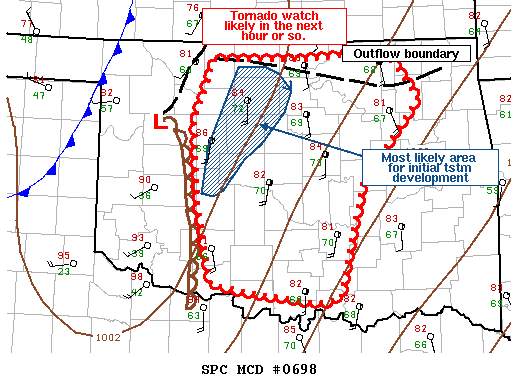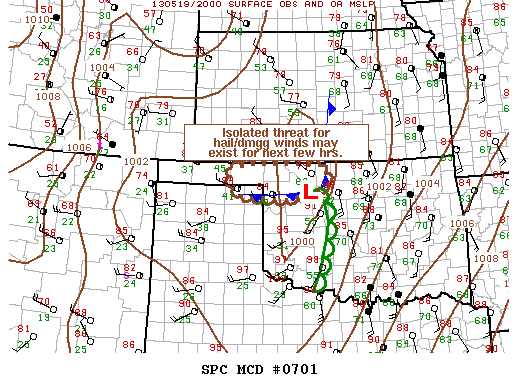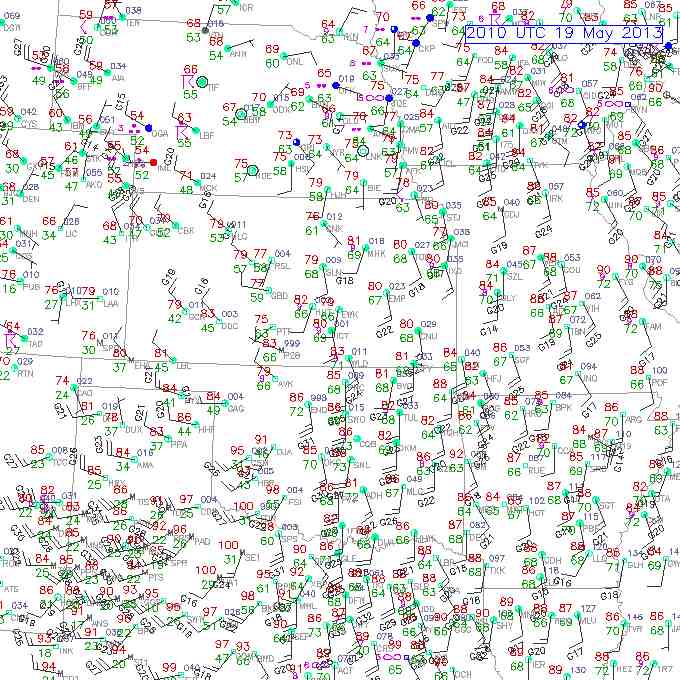JamesCaruso
Staff member
Look at the SPC tornado reports for this date and you will see a gap between the red dots in south-central KS and in central OK. This dead zone is the exact area we (regrettably) targeted, between Enid and I-35 to be exact. Not only were there no storms in this area, but the sky actually appeared to dry out and there were not even any cumulus. Meanwhile, it seemed that the triple point was just to our west (see images below). Enid was 86 over 72 with backed winds at 25, gusts to 31 (sfc obs below). I thought for sure we were in a great spot for initiation! Any insights on what happened?
Thanks to Eric Birch for thoughts he sent me directly in response to my chase report for this day, in which I asked a similar question. Looking for others' insights as well.



Thanks to Eric Birch for thoughts he sent me directly in response to my chase report for this day, in which I asked a similar question. Looking for others' insights as well.




